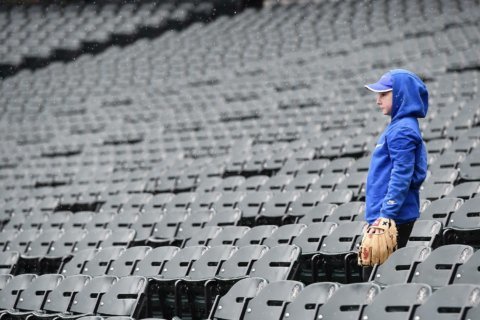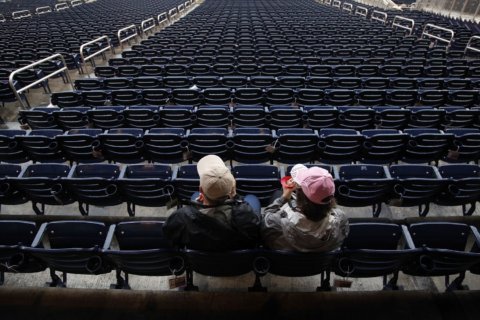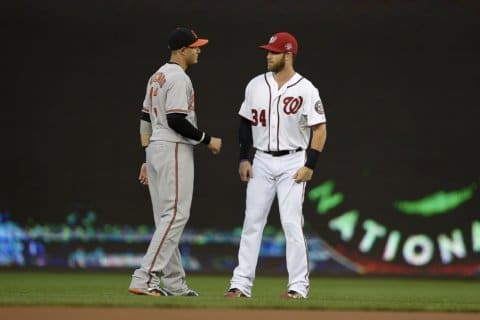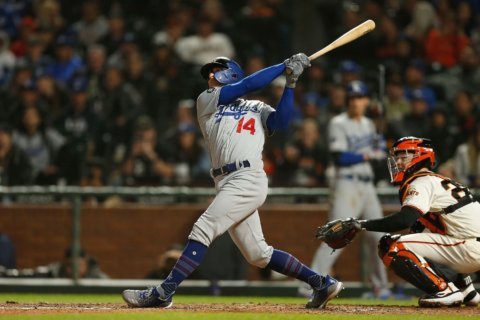Last spring, as a rash of bad weather struck the states, it was used as an excuse for Major League Baseball’s early-season attendance woes.
I explained at the time why this was not a legitimate scapegoat for some of the garishly low numbers pouring in, and sure enough, at year’s end, the numbers backed me up. MLB saw more than 3 million fewer fans in 2018, a drop-off of more than 1,200 per game, more than 4%.
Also, the two biggest fallers by year’s end were Toronto and Miami, who both play indoors.
As we’ve learned this spring, this decline was also clearly not an aberration. Year-to-date attendance is down again in 2019, and without Philadelphia’s enormous increase (more on that later) offsetting the trend a bit, the numbers would look far worse than they do.
But let’s start with the good news, and what we can learn from it. Two teams are up more than 2,000 fans per game: Philadelphia and San Diego. Any baseball fan can tell you that those cities have hardly anything in common, other than that they both play in the National League, and that they each snagged one of the top two players in free agency this year. Not every team can sign Bryce Harper and Manny Machado — there are only two of them to go around. But, as I’ve said before, any team could have signed them.
Meanwhile, eight clubs are down more than 2,000 fans per game already from last year. Seven of those eight — the Orioles, Tigers, Royals, Angels, Twins, Giants and Blue Jays — are down more than 1,000 fans for the second straight year.
But, just like last year, I’m less interested in the average attendance, which is subject to all sorts of variables. The number that matters to me is minimum attendance, or the lowest draw of the year. That number represents essentially a zero walk-up crowd, usually on a Monday or Tuesday night before school lets out, with lousy weather. As such, that number tells you what the season-ticket base is for a given team. If that number is dropping, so are season ticket sales.
Case in point, the Nats. Washington hosted an All-Star Game last year, and if you’re a Nats season-ticket holder, I don’t need to tell you that such events are used to incentivize season-ticket sales. Unsurprisingly, Nats Park was one of the teams that avoided both an average and a minimum attendance drop-off in 2018. In fact, their lowest 2018 opening (19,357) was nearly 500 fans above their lowest in 2017 (18,881). That’s not the case this year.
The Nats are averaging their lowest attendance since 2011. On Monday, April 29 against St. Louis the Nats drew 17,890, their lowest single date since 2017. That was a cloudy, but not rainy, 59-degree night against one of the better road draws in baseball. There’s at least a halfway decent chance we could see a lower number still to come.
All told, 18 teams’ minimum attendance mark dropped from 2017 to 2018. This year, 17 teams have already posted a lower minimum date than any opening last year, with eight of those clubs coming from the aforementioned 18 down again and drawing in the bottom half of the league in average attendance: the Mariners, Rangers, Pirates, Reds, Tigers (again), Royals (again), and Blue Jays (again). If you’re looking for commonalities between those clubs, none finished higher than third in their division in 2018, and none were among the Top 10 teams in payroll last year or this year.
Measuring by the average of the lowest attendance marks at each park each year is somewhat inexact science — as a single club’s swings in either direction can markedly affect the overall results — but that figure has fallen each of the last five years, with 2019’s mark (18,356) already notably below 2018’s (18,691) and down more than 8% since 2014. Remember — that number can only get worse.
(Of note, that five consecutive year decline remains, with a small leveling in 2016, even if we pull out the Marlins, who supposedly changed their attendance accounting practices last season.)
All of this goes back to MLB’s fundamental issue, which is a competitive, compelling product, not the whims of Mother Nature. Prices keep going up, but the level of investment from a good number of owners across the league hasn’t matched what’s expected of fans.
But all of this also has something to do with television revenue, and the faulty expectation that it will always go up. As MLB’s revenue share has continued to come more and more from TV revenue, teams have seemingly tried less and less to put actual butts in seats. But there have been a couple ominous signs recently regarding that particular cash cow.
Sinclair recently purchased 21 regional sports networks from Disney for $10.6 billion, which seems like a lot of money until you realize that they were valued at nearly twice as much not long ago. Buried in that Washington Post piece is an analyst explaining that the purchase price was so low because of the cord-cutting and distribution issues that cable faces generally and RSNs specifically, saying that “every major private equity firm pulled out of the process.”
As in, even Wall Street wouldn’t bet on its profitability.
The recent MASN decision (which, of course, the Orioles are appealing again) came down under seal, but reportedly only actually paid the Nats an extra $20 million or so per year in back pay, about a quarter of the difference between what they had been receiving and what they declared their market worth to be.
MLB can keep tinkering around the margins with liminal rule changes. It can keep juicing the ball. But it still hasn’t faced down its much bigger issue of a game that asks more of its fans than it gives back. Only so many teams can sell losing as a means to winning, and only for so long, before the bottom falls out.








